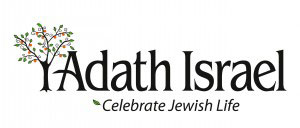A History of Adath Israel
Adath Israel was organized in 1902, when approximately 40 families combined to create an Orthodox community. In 1908 they, along with other families in Middletown and Portland, purchased a two-story building. They converted the building into a synagogue, with a classroom on the first floor, the sanctuary on the second floor, and a balcony for the women.
In the 1920s the congregation grew to about 75 families, and a full-time cantor and teacher for the Hebrew School were hired.
In 1929 the synagogue decided to buy land and construct a modern building in a more central location. They bought a house and land on the corner of Broad and Church streets, the current location of Adath Israel. Sam Google, the architect who designed The Emanuel Synagogue in Hartford, was hired to be the architect of the new synagogue.
In the early 1940s the synagogue responded to members and began to change from traditional Orthodoxy to Conservatism. A Conservative rabbi was hired, and separate seating for men and women was abandoned. The Charter was changed to reflect this.
In the middle of the 1950s, with the growth of membership, several key additions were made to the building. Five classrooms were added on a lower level, the kitchen and small sanctuary were enlarged, and a large social hall was added.
In 2008 due to the generous bequest from Muriel and Benjamin Nester, long time members of the synagogue, Adath Israel purchased an adjacent building. Renovations began and on August 30, 2009, the Nester Center (community center) was dedicated. It includes a meeting room with multimedia capabilities, a reading room and a satellite pareve/dairy kitchen. In 2018, an additional room was converted into a small sanctuary with a lovely new ark where weekday morning minyan is held as well as alternative services.
One major highlight of Adath Israel is its Judaica Museum, which is located in the small sanctuary on the first floor. Started with only three pieces of Judaica, it now boasts more than 252 items and is acknowledged to be the largest and most diversified collection between Boston and New York. We welcome visitors to the synagogue to view the collection, whether after services or by contacting the administrator at other times.
